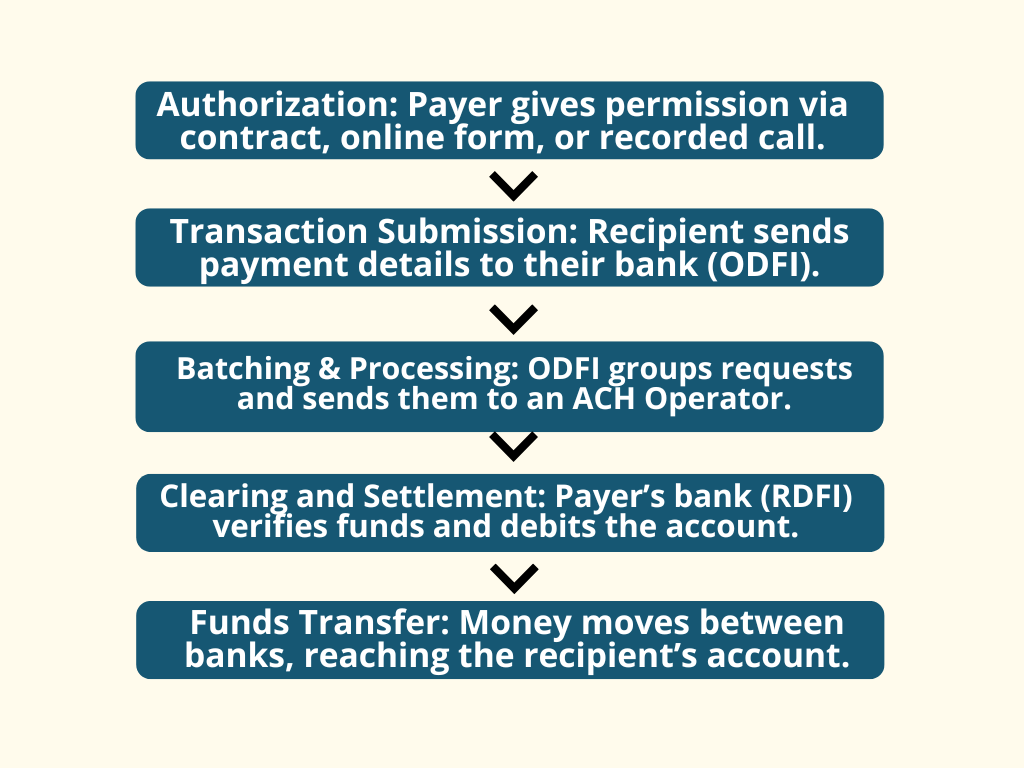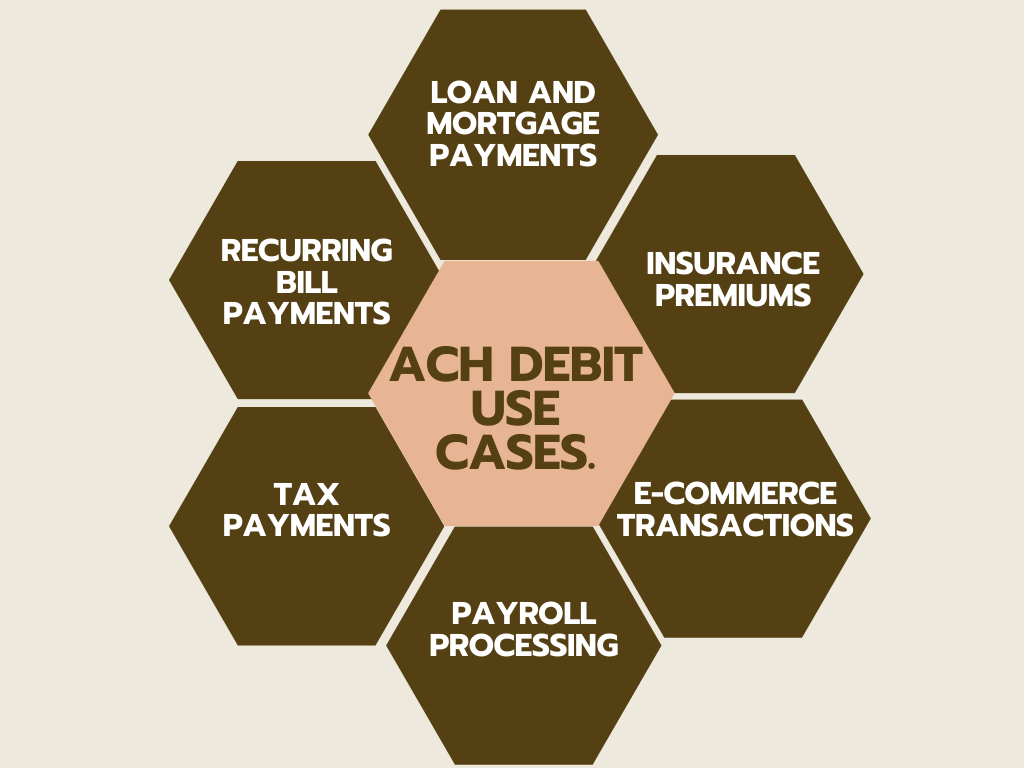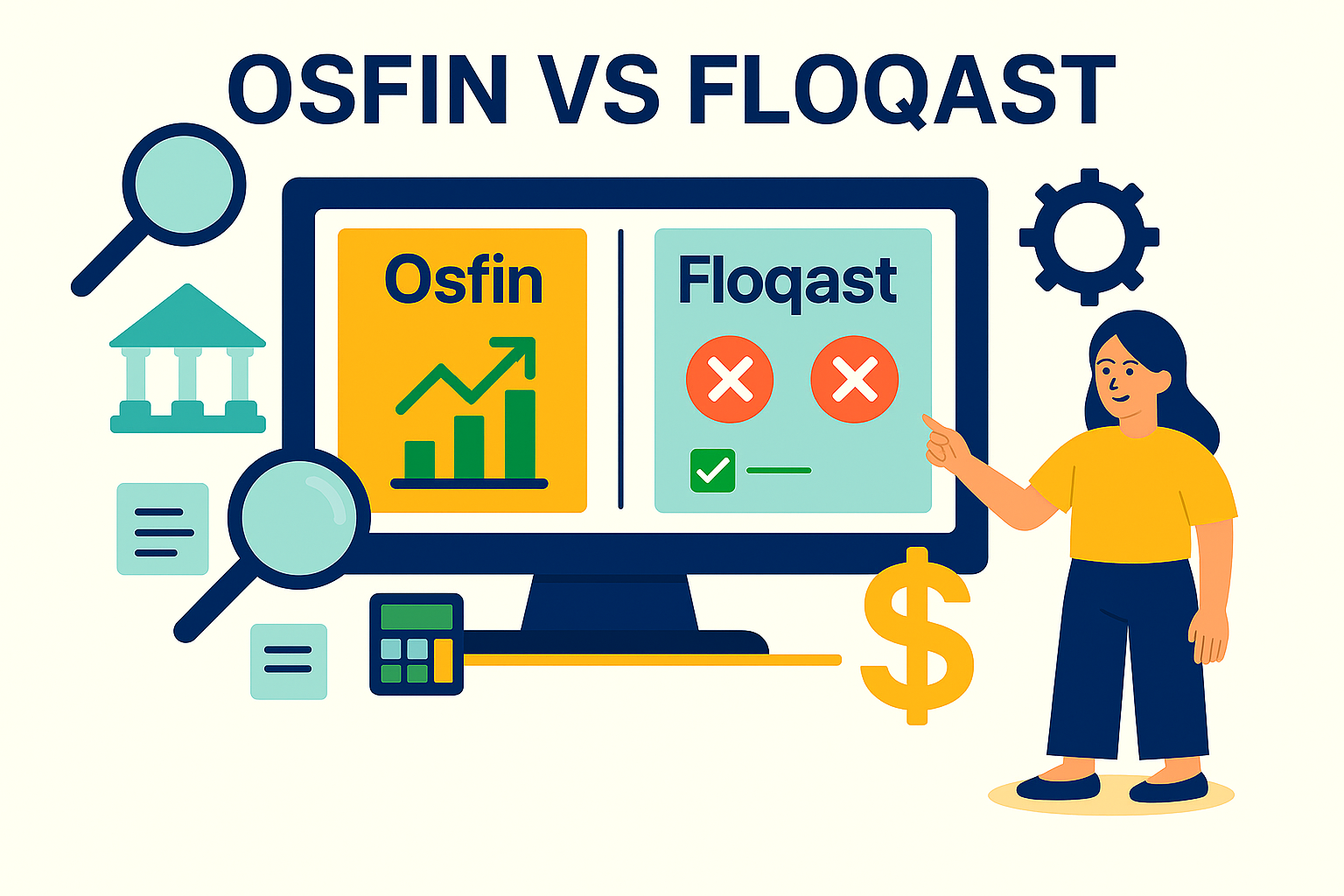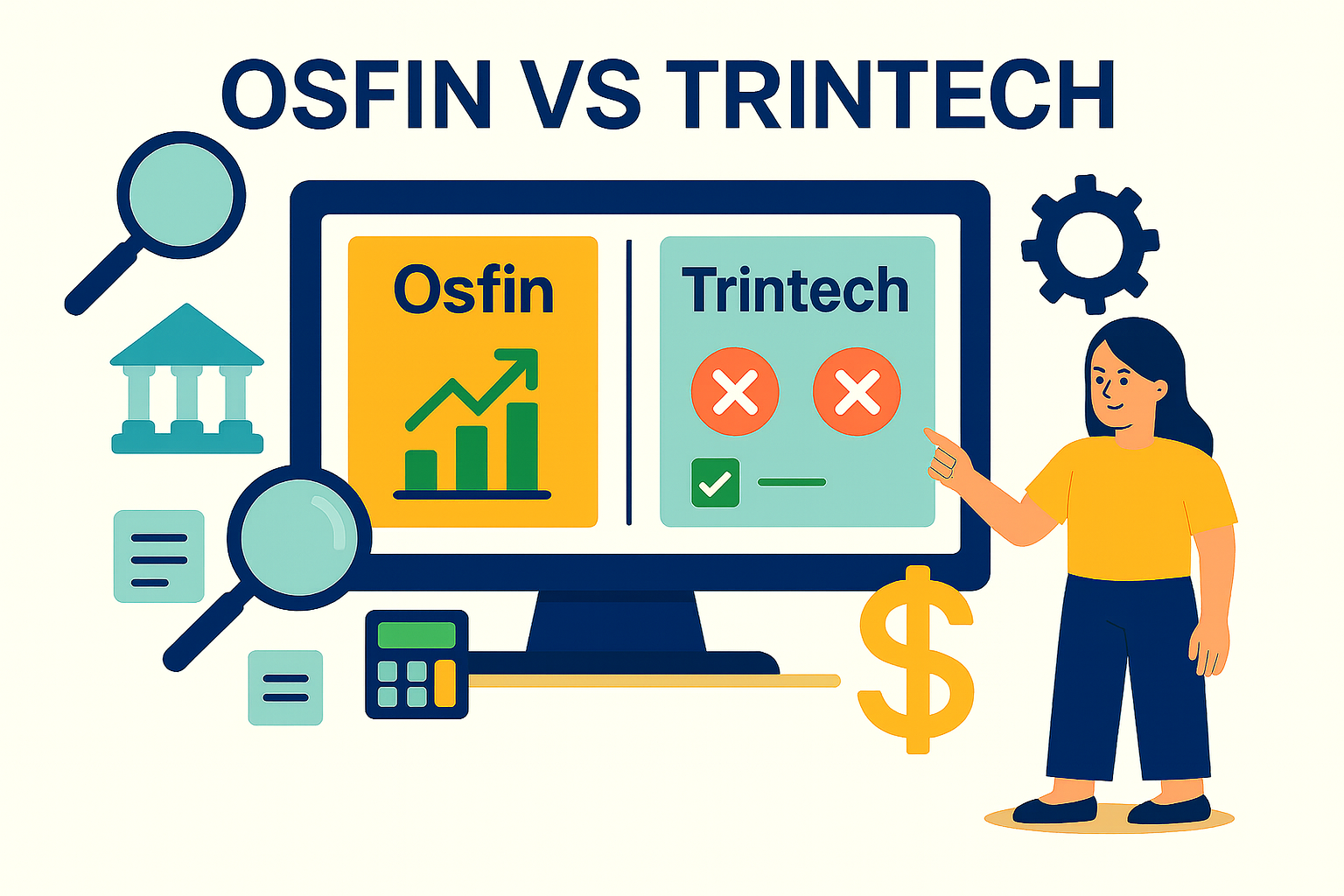ACH Debit Explained: How It Works & Key Benefits
ACH, or Automated Clearing House, is a financial network that enables electronic fund transfers between banks in the United States. A widely adopted payment method across the country, ACH is highly known for its convenience, security, and low cost.
The whole network is managed by Nacha, or National Automated Clearing House Association, which sets the operating rules and ensures its smooth functioning. ACH transfers are broadly divided into two types, ACH credits and ACH debits, depending on the way in which the funds are withdrawn from the account and their use cases.
In this article, we’ll explore ACH debits' meaning, how they work, their pros and cons and how ACH debit reconciliation can be streamlined.
What does ACH Debit Mean in Banking?
ACH debit refers to a type of ACH transfer in which the funds are electronically pulled from a bank account. Payments made through ACH debits are always initiated by the recipient after authorization from the sender.
When an ACH debit is initiated, the receiver of funds has to first obtain an authorization from the account holder to pull the funds from their account. Once the authorization is granted by the sender, the payment processing begins by the ACH network and is cleared within a few working days.
How ACH Debit Transactions Work?

ACH debit is largely used to make recurring payments like utility bills, mortgage payments, and subscriptions. Let’s have a detailed look at all the steps involved in the processing of ACH debits.
Step 1. Authorization
The recipient initiating the debit has to obtain authorization from the account holder or the sender. This authorization request can be in the form of a contract, an online agreement, or a recorded phone call.
Step 2. Transaction submission
Once the authorization request is approved, the recipient has to submit certain details like the amount, payer’s bank account info, and the date of the transaction to their own bank, which is also called the Originating Depository Financial Institution (ODFI).
Step 3. Batching and processing
After that, the ODFI groups multiple ACH debit requests into batches. These batches are then sent to an ACH operator at scheduled intervals. This operator can be the Federal Reserve or The Clearing House.
Step 4. Clearing and settlement
The ACH operator sorts the batches and forwards the relevant transactions to the payer’s bank, also termed as the Receiving Depository Financial Institution (RDFI). The RDFI checks for sufficient funds and then debits the payer’s account, typically within one to three business days.
Step 5. Funds transfer and finalization
The actual transfer of money or settlement occurs between the banks via their accounts at the Federal Reserve. The funds are then delivered to the recipient’s bank account.
{{banner3.1}}
What Types of ACH Debits are There?
ACH debit transfer payments are further classified into several types. This division is generally based on the Standard Entry Class code or SEC code assigned to each type. The SEC code designates how the debit is authorized and processed.
Each ACH bank debit type is designed for specific authentication methods and payment scenarios, such as recurring bill pay, online purchases, and B2B transfers. The main types include:
- WEB (Internet-Initiated Entry): An ACH debit which is authorized online.
- TEL (Telephone-Initiated Entry): A debit authorized by the payer over the phone.
- PPD (Prearranged Payment and Deposits): ACH debit payments initiated with a paper-based customer authorization.
- ARC (Accounts Receivable Conversion): This involves converting a paper check received for payment into an electronic ACH debit.
- BOC (Back Office Conversion): Used when a check is presented in person for goods or services and then converted to an ACH debit in the back office.
- POP (Point of Purchase): Converts a check provided at the point of sale immediately into an ACH electronic debit.
- CCD (Cash Concentration or Disbursement): A type of ACH debit transaction that is used for business-to-business payments.
- CTX (Corporate Trade Exchange): Facilitates payments between different businesses with multiple addendums (e.g., multiple invoices in one payment).
- RCK (Re-presented Check Entry): An ACH debit used to collect payment from a check returned earlier for insufficient funds.
- IAT (International ACH Transaction): Involves a debit that has an international component or destination outside the U.S.
ACH Debit Use Cases in Banking & Finance

ACH debits are used in multiple scenarios where businesses or financial institutions need to pull funds directly from a customer’s bank account in a secure, efficient, and cost-effective way. Common use cases include:
1. Recurring bill payments
Many utilities and subscription-based services often use ACH debits to collect recurring payments from their customers. This significantly reduces the need for manual processing and cases of late payments.
2. Loan and mortgage payments
Banks and lenders can set up automated monthly ACH debits for loans, mortgages, and rent to ensure timely and hassle-free monthly payments.
3. Insurance premiums
Life, health, and general insurance companies also use ACH debit to collect monthly or annual premiums. The process eliminates the need for chasing payments and leads to policy continuity.
4. Payroll processing
Employers often utilize ACH debits to deposit salaries directly into their employees’ bank accounts.
5. E-commerce transactions
Online retailers provide the option for ACH debits, allowing their customers to make purchases directly from their bank accounts.
6. Tax payments
Government agencies and tax authorities also accept ACH debit for collecting income taxes, property taxes, and business tax settlements from taxpayers.
{{banner1}}
Where ACH Debit Shows Up in Bank Statements?
ACH debits appear on the bank statement as electronic withdrawals. These are identified mainly by the merchant’s name, payment description, and sometimes further coded details that help in recognition and reconciliation.
Although different banks may format ACH debit meaning in a bank statement differently, the following three details are mandated by the Regulation E of federal guidelines and NACHA Operating Guidelines:
Company Name: Usually limited to around 16 characters. It can also be truncated if it’s longer than that.
Entry Description: Typically, the description is up to 10 characters, often set by the merchant to help identify the payment type or purpose.
Recipient’s Name: This is the receiving individual’s name associated with the transaction and can be up to 22 characters.
What are the Pros and Cons of ACH Debit?
Before settling for ACH debits as a preferred way to initiate certain types of payments, it’s better to understand the benefits and limitations of ACH debits.
Pros of ACH debits
1. Lower Cost: ACH debit transactions typically have much lower processing fees compared to other payment methods like credit cards, wire transfers, or paper checks. Checks, on average, can cost $4–$20 and credit card payments can go as high as 2% of the transactions. Compared to this, the average cost of ACH transfers lies somewhere between $0.26–$0.50.
2. Convenience: ACH debits automate recurring payments, reducing the need for manual entries or check processing. This convenience improves cash flow management and reduces administrative effort.
3. Security: ACH payments use secure networks as every transaction is encrypted and under strict regulatory oversight, reducing risks like fraud or theft. The mandatory authorization process and automated systems also increase payment accuracy and reduce errors.
4. Improved Customer Experience: Offering ACH as a payment option makes paying bills or subscriptions easier for customers who prefer bank payments over credit cards or checks, resulting in better conversion and retention.
5. Stable Payment Details: Bank account numbers used for ACH payments rarely change. This means fewer chances of failed payments due to expired payment information. This also reduces the administrative overhead compared to credit cards that expire and need updating.
Cons of ACH debits
1. Slower Processing Time: ACH transactions are processed in batches and usually take up to 1-3 business days to clear, which is slower than instant wire transfers or card payments. Same-day ACH also exists, but often with limits or high fees.
Read also: ACH vs Wire Transfer: What Are the Differences in How They Are Reconciled?
2. Transaction and Frequency Limits: Banks and institutions may impose limits on the amount per transfer, daily/weekly/monthly totals, or on the frequency of ACH debits. This can restrict usage for high-value or numerous transactions.
3. Domestic Use Only: ACH online banking debits generally work only within the United States between US bank accounts. For international payments, alternative payment networks or wire transfers are needed.
4. Potential for Fraud and Reversals: Although secure, ACH debits can be subject to fraud if bank account information is compromised. Additionally, ACH payments may be reversed due to errors or unauthorized transactions, causing cash flow uncertainty for recipients.
5. Sharing Bank Account Details: Customers or businesses making ACH debits must share sensitive bank account information with merchants or processors, which some may find concerning.
How Osfin Automates ACH Debit Reconciliation?
Reconciliation is the process of comparing entries from different systems or sources to make sure they match and everything adds up correctly. If any discrepancies are found, the process also includes exception handling and necessary adjustments to resolve mismatches and ensure data accuracy.
ACH debit transactions, like any other payment method, require thorough reconciliation to ensure all entries, across bank statements, internal ledgers, and payment processors, are perfectly aligned. This is done to ensure financial accuracy, detect discrepancies early, and maintain trust in the overall payment process.
Manually performing an ACH debit reconciliation, however, can be quite challenging, especially for institutions that deal with larger volumes of transactions on a daily basis. Plus, manual processes are slow and error-prone. Automating the whole process is a considerably better option, both to enhance operational efficiency and for improved financial accuracy.
And Osfin works as the perfect reconciliation partner, automating the process end-to-end with extraordinary precision and speed. Here’s how Osfin transforms a traditionally tedious process into a smart and seamless operation.
1. Smart Data Ingestion
Osfin is a file-format agnostic platform, meaning it can pull data from virtually anywhere, in any format. With 170+ ready integrations, it seamlessly imports data from banks, ERPs, payment gateways, ACH operators, and more.
Before reconciliation even begins, Osfin:
- Applies data quality checks and validations to filter out poor-quality data
- Detects duplicates and outliers at the point of ingestion
- Prevents downstream errors by validating data upfront
2. Lightning-Fast Reconciliation
Powered by logic-based matching, Osfin handles even the most complex cases, whether it’s many-to-one or one-to-many transaction mapping. It can:
- End-to-End reconciliation of 30 million records in just 15 minutes
- Auto-match payment gateway reports, factoring in commission, tax, and fee breakdowns
- Eliminate tedious manual checks with 100% accuracy and speed
3. Intelligent Exception Handling
When mismatches occur, Osfin ensures they’re resolved quickly and transparently:
- Flags unmatched transactions and assigns an appropriate reason to such transactions instantly
- Routes exceptions to the right team member for action
- Provides live dashboards showing match status, exposure, and exception queues in real time
4. Secure, Audit-Ready Output
Every reconciliation cycle ends with compliance-grade reporting and a full audit trail.
- Maintains complete transaction history and traceability
- Protects data with 256-bit encryption, role-based access, and two-factor authentication
- Meets top security standards: SOC 2, GDPR, PCI DSS, and ISO 27001
{{banner1.1}}
The Bottom Line
ACH debits are a convenient way to process recurring payments and other large-scale business transactions and are much more cost-effective than wire transfers, checks, and credit card payments. While they simplify payment processing for businesses, reconciling these payments remains a complex and resource-intensive challenge for banks and financial institutions. Manually integrating transaction data from multiple source points, normalizing that data, and matching it to ensure accuracy across all sources can be complex, time-consuming, and prone to errors.
Instead of getting bogged down in such tedious manual work, you can use Osfin, a trusted automated reconciliation platform that streamlines all types of payment reconciliation with 100% accuracy. It automates your entire reconciliation workflow so your operations team can focus on what matters most: strategic growth and higher-value initiatives.
{{banner3}}
FAQs on ACH Debit
1. What is ACH debit payment?
ACH debit means a type of ACH transfer that involves pulling of funds from a bank holder’s account by a recipient. However, before the payment processing is initiated, the recipient has to request an authorization from the payer for the same. After the authorization is confirmed, ACH debit transfer is initiated in batches and settled by an ACH operator within a few business days.
2. What does ACH stand for and how long does an ACH transfer take?
ACH stands for Automated Clearing House, an electronic payment method used by different banks in the US. ACH transfers usually take 1-3 business days to complete. The exact timing can depend on several factors, such as initiation time and date and type of transfer. ACH debits are processed faster than credits. Same-day ACH is also provided by certain financial institutions at a higher cost, which comes in handy for urgent payments.
3. How safe is ACH debit?
ACH debit transfers are considered quite safe due to robust security measures applied to each transaction by Nacha, such as constant monitoring, multi-factor authentication, and encryption.
4. Is ACH debit the same as debit card?
No, ACH debit and debit cards are totally different payment methods. ACH debit is an electronic bank-to-bank transfer of funds, while a debit card is a payment card that is usually linked to a checking or savings account.


